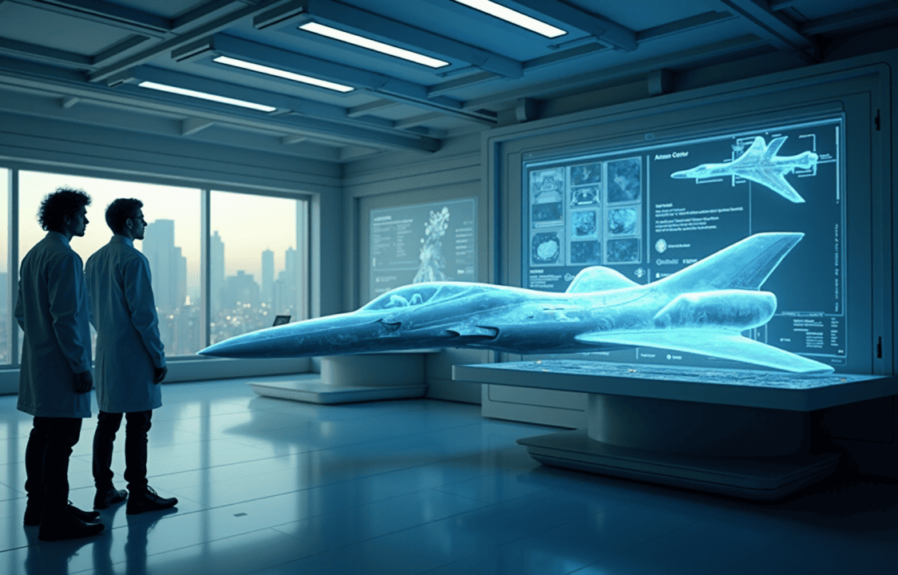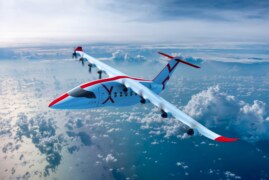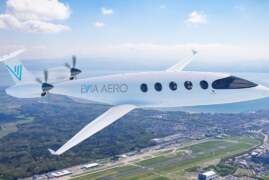The aerospace industry has always been at the forefront of technological advancements, and aircraft design is no exception. The quest to improve fuel efficiency, reduce environmental impact, and increase passenger comfort has led to a range of innovations that are reshaping the future of aviation. Here’s how the aerospace industry is embracing new technologies and design concepts:
1. Lightweight Materials for Improved Fuel Efficiency
New materials are playing a crucial role in reducing the weight of aircraft, which in turn improves fuel efficiency. Advanced composites like carbon fiber and lightweight alloys are replacing traditional metals, allowing for stronger, lighter, and more durable aircraft.
Example: Boeing’s 787 Dreamliner utilizes composite materials for its fuselage and wings, making it significantly lighter than older aircraft models while improving fuel efficiency by up to 20%.
2. Advanced Aerodynamics for Enhanced Performance
Designing aircraft with advanced aerodynamic features reduces drag and increases fuel efficiency. New computational methods allow designers to simulate airflow and optimize wing shapes, leading to smoother flights and less fuel consumption.
Example: The Airbus A350 XWB is designed with optimized wings and fuselage to reduce drag, making it one of the most fuel-efficient aircraft in its class.
3. Electric and Hybrid Propulsion Systems
Electric and hybrid propulsion systems are being explored to reduce the reliance on fossil fuels. These innovations aim to reduce emissions and provide a cleaner alternative for air travel, particularly for short-haul flights.
Example: Companies like Rolls-Royce and EasyJet are partnering to develop electric aircraft prototypes, with the goal of having fully electric commercial planes by 2030.
4. Sustainable Aviation Fuels (SAFs)
The aviation industry is increasingly adopting Sustainable Aviation Fuels (SAFs) to reduce carbon emissions. SAFs are produced from renewable sources and have the potential to cut emissions by up to 80% compared to traditional jet fuels.
Example: In 2020, KLM successfully completed its first flight using SAF, marking a significant step toward sustainable air travel.
5. Next-Generation Flight Control Systems
Next-generation flight control systems are enhancing safety, performance, and pilot control. By integrating automated systems and advanced sensors, these systems offer smoother operations and more precise handling in various flight conditions.
Example: The Boeing 737 MAX features advanced flight control systems that help optimize fuel efficiency and ensure smooth operations during takeoff, cruise, and landing.
6. Noise Reduction Technologies
Noise pollution from aircraft engines has long been a concern for communities near airports. New technologies, such as quieter jet engines and sound-absorbing materials, are being developed to reduce the impact of noise.
Example: The Airbus A320neo features new engine technology that significantly reduces engine noise, making it one of the quietest narrow-body jets in operation.
7. Supersonic and Hypersonic Flight
Supersonic and hypersonic aircraft promise to dramatically reduce travel times, making long-haul flights faster and more efficient. Researchers are working on overcoming the technical and regulatory challenges to bring these aircraft into mainstream use.
Example: Companies like Boom Supersonic are working on the Overture, a supersonic commercial airliner that aims to cut travel times in half for long-distance flights.
8. Autonomous Aircraft
Autonomous flight technologies are being developed to reduce human error and increase operational efficiency. These aircraft could potentially operate without pilots, although regulatory and technological hurdles remain before they become commonplace.
Example: The development of autonomous cargo aircraft by companies like Elroy Air aims to revolutionize the logistics industry by enabling efficient, pilot-less airfreight transport.
9. Modular Aircraft Design
Modular aircraft design is allowing for greater flexibility in aircraft configuration. With interchangeable parts and components, airlines can easily adapt their fleets for different missions, whether it’s passenger transport, cargo, or special operations.
Example: The Embraer E-Jet E2 family offers modular cabin designs that allow airlines to easily reconfigure the aircraft for different purposes, making it more adaptable to changing market needs.
10. Improved Passenger Experience
Modern aircraft design focuses not only on performance but also on enhancing the passenger experience. New seating configurations, cabin layouts, and in-flight entertainment systems are being integrated to make flights more comfortable and enjoyable.
Example: The Airbus A350 features spacious cabins with quieter interiors, better lighting, and advanced air filtration systems, all designed to improve passenger comfort.
Conclusion
The future of aerospace innovation is an exciting one, with new technologies driving improvements in aircraft design, fuel efficiency, and environmental sustainability. As the industry continues to evolve, we can expect to see more breakthroughs in aircraft materials, propulsion systems, and passenger experiences, creating a cleaner, faster, and more efficient future for air travel.
What innovations in aerospace are you most excited about? Share your thoughts in the comments below!




Leave a comment